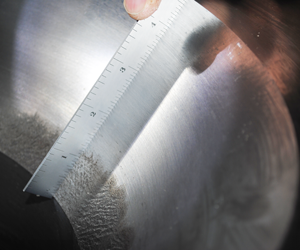透明で半透明は、光が材料を通過することを明確に説明するために使用される用語です. これらの部品を生成するための適切な方法を選択すると、最終製品のパフォーマンスに大きな影響を与える可能性があります, 視覚的な魅力, および費用対効果. これらの違いを理解することで、さまざまなアプリケーションに最適な選択肢が保証されます, 家電から自動車照明まで.
透明な材料: 概要
透明性の定義
透明な材料により、光は完全に通過できます, 吸収や散乱を最小限に抑えます. これにより、素材を通して明確なイメージングが可能になります.
透明な材料の特性
屈折の法則を完全に遵守します.
明確で一貫した外観.
最小限の内部欠陥または不純物.
一般的な例:
ガラス
クリア アクリル (PMMA)
ポリカーボネート (パソコン)
ダイヤモンド
清水
実用的なアプリケーション:
眼鏡
カメラレンズ
自動車ヘッドランプ
コンピューター画面
水族館と戦車
半透明の材料: 概要
半透明の定義
半透明の材料は、光の部分的な伝播を可能にしますが、光子を散乱させます, 明確な画像形成を防ぎます.
半透明の材料の特性
光の部分的または拡散した伝達.
必ずしも屈折法を厳密に遵守するわけではありません.
内部構造の矛盾が含まれています, 光子散乱の促進.
一般的な例:
霜のガラス
ワックスペーパー
着色されたプラスチック
アイスキューブ
ゼリー
実用的なアプリケーション:
プライバシーグラス
ランプの光拡散剤
包装材料
装飾コンポーネント
透明対. 半透明: 主な違い
どれだけの光が通過するか?
透明 材料により、ほとんどすべての光がまっすぐに輝きます. 透明なガラスの窓を想像してください: 反対側にあるものを簡単に確認できます.
半透明 材料は、ある程度の光だけを通過させます, 残りを散らします. つや消しのガラスを考えてください。あなたはその背後に何かを伝えることができます, しかし、詳細はファジーです.
それを通してはっきりと見ることができますか?
透明 明確なビューを取得することを意味します. 透明なプラスチックを保持している場合, あなたはそれを通してはっきりと見ることができます, カメラのレンズを通して見るようなものです.
半透明 あなたの見解がぼやけているか不明であることを意味します. ワックスペーパーを明るい光に当てているようなものです, あなたはそこに何かがあることを知っています, しかし、それは鋭くありません.
彼らは屈折の規則に従っていますか (光の曲げ)?
透明 材料は屈折の規則に従います. 光が入り、スムーズに出て, 整然ととどまる. そのため、レンズと眼鏡は非常にうまく機能します.
半透明 材料は光を散らします, したがって、彼らはこれらの屈折ルールに厳密に従っていません. それが彼らがはっきりとではなく柔らかく輝く理由です.
画質はどれくらい良いですか?
と 透明 材料, あなたは鋭い画像を取得します. きれいな水槽を見ることを考えてください - あなたは魚をはっきりと見ることができます.
と 半透明 材料, 画像はぼやけているか、はっきりと見ることができません. アイスキューブを覗くと想像してみてください。何が背後にあるのかは不明です.
内部材料品質
透明 材料は通常、内部の欠陥や欠陥が少なくなります, したがって、光をブロックしたり散らしたりするものはありません.
半透明 材料は通常、光を散乱させて拡散する内部の欠陥または小さな粒子を持っています, 物事を明確にするように見えます.
製造における透明で半透明の部品の重要性
透明性により、内部プロセスを直接観察できます, これは、機器の操作を監視するために不可欠です. その間, 半透明は制御された照明を提供します, 美的魅力, とプライバシー. 両方のプロパティは、さまざまなアプリケーションで重要な役割を果たします, 製品の実用的な使用と視覚的影響に影響を与えます.
透明で半透明の部品の製造プロセス
メーカーが透明で半透明の部品を作成する最も一般的な方法は次のとおりです, わかりやすい用語で説明されています:
3D SLAで印刷 (ステレオリスム造影)
SLAはレーザーを使用して、液体樹脂層ごとに固体オブジェクトに固化します.
のために良い: クイックプロトタイプ, 詳細な形状, そして複雑なデザイン.
長所:
速い, 簡単なテストに最適です
手頃な価格のプロトタイプ
可能な複雑な形状
短所:
耐久性が低く、脆くなる可能性があります
余分な作業が必要です (研磨) 明確な仕上げを得るには
長期使用には良くありません
CNC加工 (コンピューター制御の切断)
CNCマシンは、アクリルのような透明なプラスチックの固体ブロックから透明な部品を彫ります.
のために良い: 強力な正確な部品, 車のヘッドライトやレンズのように.
長所:
高精度と強度
スムーズ, 研磨後に可能なクリア仕上げ
実際の最終製品に近い
短所:
大量に高価です
時間がかかります, 特に研磨で
複雑な内部形状を簡単に作成できません
射出成形
射出成形は透明なプラスチックを溶かします, 次に、それを型に注入して多くの同一の部分を作成します.
のために良い: 大量生産されたアイテム, 透明なカップや電子カバーのように.
長所:
大量に高速かつ効率的です
非常に一貫した品質
耐久性のある, 高品質の仕上げ
短所:
高い前払い費用 (型を作るのは高価です)
遅い起動時間 (金型の週/月)
小さなバッチや1回限りのバッチには理想的ではありません
真空鋳造 (シリコン型鋳造)
真空鋳造は、透明な樹脂で満たされたシリコン型を使用します, 部品の小さなバッチを作るのに最適です.
のために良い: 低容量生産, クイックテスト, および視覚サンプル.
長所:
小さなバッチには手頃な価格
速いターンアラウンド
簡単な色の調整
短所:
射出成形部品ほど強くも耐久性もありません
各型は周りにしか作ることができません 20 コピー
その他のテクニック (レーザーとウォータージェット切断)
これらの方法は、クリアシートから平らな形をすばやく切っています.
のために良い: 単純, フラットデザイン.
長所:
平らな部品の場合は迅速です
正確なカット
短所:
フラットまたはシンプルなデザインに限定されています
厚いまたは複雑な形状にコストがかかります
これらの方法を知ることは、どれだけの強さに応じて適切なテクニックを選ぶのに役立ちます, クリア, 複雑, または、費用対効果が必要です.
透明性と半透明性を高めるための後処理技術
望ましい透明性を達成するには、多くの場合、追加の仕上げプロセスが必要です, 含む:
サンディング
後続のプロセスのために表面を準備します. 粗さを除去するために不可欠です, ツールマーク, 透明性の向上.
研磨とfu蒸
機械的研磨は表面を滑らかにします, 透明性の向上. アセトンfu蒸は、特定のプラスチックを化学的に滑らかにします (例えば, パソコン, PS), 明確さをさらに向上させます.
スプレー塗装とコーティング
保護および審美的な仕上げを適用します, 透明性または半透明レベルを調整し、UV保護または着色を追加する.
樹脂コーティング
平らな表面で高い明確さを達成するのに最適です, 樹脂コーティングは軽微な欠陥を満たします, 明確なものを提供します, ガラスのような外観.
着色技術
視覚的な魅力と機能を強化するための色合いやテクスチャを追加する, 一般的に絵画を通して, 着色, またはテクスチャコーティング方法.
適切な製造方法を選択する際に考慮すべき要因
適切な方法を選択します, 考慮する:
生産量: 大量の射出成形, プロトタイプまたは小さな実行のSLAまたは真空鋳造.
材料強度の要件: 堅牢な部品のCNC加工または射出成形.
予算の制約: 費用に敏感なプロトタイプのニーズのための真空鋳造またはSLA.
透明性レベル: CNCの機械加工と射出成形は、最高の明確さを提供します.
幾何学的な複雑さ: 複雑なジオメトリのSLA; より高い精度でより単純な形状のCNC.
結論
透明で半透明の材料は、製品の機能と美的魅力を高めます. 正しい生産方法を選択するには、透明性要件のバランスをとる必要があります, 強さ, 複雑, 音量, コストの考慮事項. SLAの長所と制限を理解することにより, CNC加工, 射出成形, 真空鋳造, 製造業者は、パフォーマンスと収益性の両方を最適化する情報に基づいた決定を下すことができます.
経験豊富なプロトタイピングスペシャリストのコンサルティングは、あなたの戦略をさらに洗練させることができます, 透明または半透明のコンポーネントが形と機能の両方で期待を上回ることを保証する.








